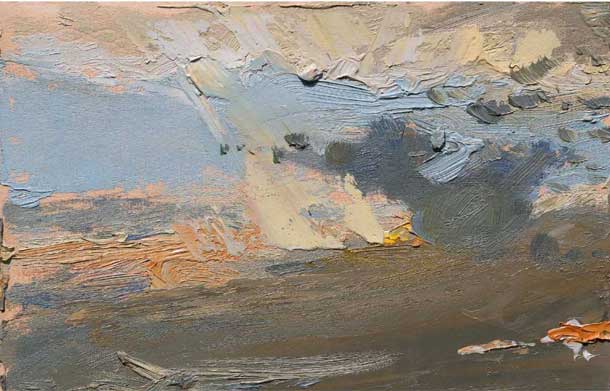
John David Wissler Ochre Light 6×7 inches Oil on Panel
click here for a larger view
John David Wissler is a Pennsylvannia based painter who shows at the Lancaster Galleries and the Islesford Artists Gallery of Little Cranberry Island, Maine.. I’d like to thank him for taking the time to answer my questions about his fabulous landscapes. John David Wissler attended Kutztown University for his BFA and Parsons School of Design for his MFA in 1989, where he studied with Paul Resika, who in turn had studied with Hans Hofmann. Plein Air Magazine in its December 2012 issue had a terrific article about him and his Friday Painting group, Contemporary Ideas about Surface and Spaces which you can read from the link.
LG: You got your MFA from the Parsons School of Design and have studied with an impressive list of painters including Leland Bell, Paul Resika, and Larry Rivers. Please tell us something about your evolution as a painter and what has lead you to become the painter you are today.
JDW: First, I want to thank you for asking me to do this interview with you Larry, I am honored.
This is a great question! Early on, I was a bit of a perfectionist (perhaps the poster child). I wanted to be in control of it all. I drew and rendered everything, seeing all the details as important and painted some very pleasing, pretty, dead paintings! My high school art teacher, Faith Lang, and later my friend, professor and artist George Sorrels, opened the door for me to see great painting. This was the beginning of painting for me. In Claude, Corot, Inness, Cezanne, and Matisse, I saw moving spaces, full of air! Color that moved my eye, that took chances and was never static. I realized I was not happy painting how I was taught. I needed to begin to move the paint, free myself from the rules. Explore; push myself to move beyond what was comfortable to me, to see! I began to consider building and creating the tension between shape and color, Opening the picture plain in a dynamic way. This can be heightened color and value or subtle. It is truly about building relationships on the picture plane that create believable space. No longer was I only interested in the surface of things, but more.
As Corot said in his great letter to his friend Stevens Graham “Clouds that stand still are not clouds, motion, activity, life, yes, life is what we want…life!” This is something I try to bring to all my work, open air or studio invention. I am not at all interested in making narrative painting, but, my painting is an honest reflection of my life through paint. I don’t expect the viewer to “get “this. I enjoy when someone tells me a story about what they see, how they relate to my painting. When someone does get it, that is very satisfying for me.
(Ed note: Anyone wishing to read the full text of Corot’s letter to Stevens Graham can do so from this link to Google ebook, Elbert Hubbard’s Little Journeys to the Homes of Eminent Artists – page 20 (scroll down) Corot
Above Lancaster 12x12inches oil on panel
Sunrise on the Western Way from Great Cranberry
Light Fall 11×12 oil on panel
My Friend 7×6 inches oil on panel
I have been blessed with mentors and friends, along the way, who have reinforced my passion for the pursuit, seeing, reacting, studying, observing and painting. Seeing the line that connects great painting, not in the art historical way, but how it (painting) relates to the picture plain, how it relates to life and the poetry of it. Paul Resika, Leland Bell, John Heliker and Larry Rivers are great painters, fine examples of this philosophy. It was wonderful to study with these artists. ( also the artists that used to visit the Parsons studio, Nell Blaine, Lennart Anderson and Albert Kresch to name a few) Each of them had very strong opinions about the art world and painting, all gifted teachers, painters, and friends. They freely shared their passion for painting, their work ethic, one painting leading to the next, never being truly satisfied with the last…this is how I work as well. They sharpened my eye to look critically at other work and learn from it.
I also have a group of friends who share these thoughts and challenges. We call ourselves the “Friday Friends” Eric Golias, William Kocher and Michael Allen are the core of this group. We paint outside together. We have great art conversation about paint, it is good! (I do miss the argument and critique of my New York days) You know, all of these people, these experiences and painting have made me who I am. They are all part of this evolution, as you call it. Of coarse it is, in the end, about the painting. You can talk all you want, but until you put paint on the canvas, it means nothing. I like your word evolution as well, for it continues.
Near the Beginning 12×16 inches oil on panel
Sending 12×12 oil on panel
LG: Have you always primarily painted landscapes? Do you only work alla prima from life? Why wouldn’t you want to return to a spot over multiple sessions at the same time of day and weather conditions?
JDW: I have always had a passion for the landscape; it allows me to express who I am. I love painting it, it feeds my soul. I have painted the figure and still life , these paintings are for me. I mainly show my landscape. Painting outdoors is where I learn my language; I can go back to the studio; reflect on my experience and use my memory of place to work on paintings. I tend to use whatever means I have to create a painting. If it is alla prima from life or a painting that may take a year in the studio, one leads to the next. I do love the quality of alla prima painting, that beautiful fresh mark, the rhythm of the brush, mark of the knife, man that can be so seductive. Like Rouault or Constable I want the (studio) work to maintain the immediacy of mark, reveled struggle and sense of atmosphere (sometimes Constable lost this in his studio painting). Yes alla prima. Yes, go back to the same place multiple times. Yes, scrape out when it doesn’t work. It is about the rectangle, when it is working that is what leads me. I will say this; direct observation is paramount to what I do, as is invention and memory.
LG: The response to quickly changing light in outdoor, alla prima painting often creates an urgency that makes for vigorous,emotionally charged paint handling. You are putting yourself on the line to try and “get it right” – both in terms of capturing your moment before the motif as well as meeting the needs of the painting.
Do you ever feel when viewing similar loose and vigorous painting handling created in the relative calm of a studio environment, especially with intentional paint-drips and the like, seem less authentic somehow? Would you paint a still-life or scene from memory the same way as you do with your outdoor work ?
JDW: Ah yes, the challenge invigorates me! I believe painting from life will always take me down unexpected roads, both literally and figuratively. Nature is full of surprise and change, it is never the same. I hope I never impose my habits on it. “Getting it right” That is not at all about recording it (the motif) but using it as inspiration. Sure I want a sense of place; I want believable space and atmosphere. Corot found his muse in Italy, his light, and spent his life painting. He used this muse (his observed invention) it to create beautiful works that take us on unexpected journeys. It never became a crutch or the easy way out, but a pursuit that took him his whole life.
To the second part of your question, I have seen paintings that are bad, flat, no relationships that move the eye, and yet are very decorative with paint – drips and scrapes etc. In good painting, all of that is necessary. It opens space, creates movement, weather it is finished like Van Eyck or Vermeer or finished like Bonnard or Diebenkorn, the painting works! Beware of formula, learning a method can take you to a certain level of painting, but use these as spring boards for your own experimentation. Often the more decorative surface oriented painting is technically good but they stop there (and are bad painting). A good painter takes it further makes it their own, creating relationships that work.
We Three 8×9 oil on panel
LG: Sunsets and moving clouds are so ephemeral, they would seem to activate memory as much as vision. Isn’t invention just as important as observation in this situation? With that in mind – what makes it so difficult to recreate this experience in the studio? For instance, why couldn’t you just witness a sunset and then return to the studio and paint it from memory and invention? What might be missing for you?
JDW: Morning light and evening light, my favorite times of day to paint! Memory and invention are important! They are important to the distillation of your language of painting to its essential. Albert Kresch is a great painter who dose this so well also Paul Resika. They have both painted open air for over 40 years or more and have gained that language, that simplification, free from constraint. They have the ability to use the motif to improve it! Both of these painters could be riding the wave of their past, instead they are creating that wave! I hope when I am in my 80’s I am still pushing this envelope!
I like your “activate memory as much as vision” used in your question. That is what happens, more or less, both out doors and in the studio. In the end though, the painting takes over, the poetry of life, experience reflected through vigorous observation. Both invention and observation challenge me. In the studio I am somewhat free from the motif, now the brush can take me there, unless I begin to take control again and it begins to grind to a halt! It is the instant stimulus of nature, the unexpected, that I miss in the studio. The brush and the act of painting can replace this when all is going well.
LG: Do you work out the idea for the painting beforehand with drawing? At what point do you decide what the painting will be about?
JDW: My sketchbook is ever with me, in my car, as I walk, in the museum. The French easel is in the trunk of my car, with panels and prepared paper. I return to old places and find new, working on the same ideas over years. It is a constant process for me, discovering, rediscovering, it is never the same, nature is never the same. I am always working out my idea!? One of the folks who lives on Great Cranberry Island told me how they invited the artist Emily Nelligan to work on their shoreline rather than where she always works. Her response was, “it is never the same”, she didn’t need to go there. I agree.
LG: You recently were awarded a residency at the Heliker-LaHotan Foundation on Cranberry Island in Maine, where many painters with a connection to modernist painting have lived or worked. Artists such as Rockwell Kent, Jamie Wyeth, Gretna Campbell, Louis Finkelstein and Emily Nelligan are just a few of the luminaries who’ve been enchanted with this place. Can you tell us something about your experience there?
JDW: I was a resident at the Heliker-LaHotan Foundation on Great Cranberry Island Maine in 2009; I have been back there six times since then. Most recently, 2012, I was a resident at the Borgo Finocchieto in Tuscany Italy.
Great Cranberry, a gift, a gift! The Foundation is a wonderful place. You live in the house and studios where John Heliker and Robert LaHotan painted and lived, sharing them with other creative folks. The Foundation is led by Patricia Bailey who isa painter, and old friend of Jack Heliker.
I have fallen in love with this Island. Indeed there have been many artists who have found inspiration here Emily Nelligan and Ashley Bryan are the last of the older generation (arrived on the island in late 40’s early 50’s) to still walk the shores of both great and little Cranberry. I believe Nelligan is the muse. Her paintings (I refuse to call them drawings) are beyond my words. She is the rock, the tree, the sky. Man; she makes you want to paint! My experience on Cranberry, is not easy to talk about, I do so love the place. I am not finished painting it, not recording it, but painting it. Sharing it with my friends and family is important to me as well. The Island and the paintings have profoundly affected all of my work. All I can say is look at my paintings.
The Borgo and Italy, what a place Tuscany is, very difficult to paint! A landscape I have never seen before. I loved the challenge. Just being immersed in all the history, great painting is everywhere.
I shared this place with my good friend Eric Golias, John Goodrich and his wife Jenny and Barbara Kassel and her husband Jed Fry. We all had a fantastic time. I painted like a mad man. You see when I go to a new place; I see it through painting. I believe I will go back. Italy is beautiful. Cranberry…I must go back, it feeds my soul.
LG: How do you feel about the increased attention and popularity of Plein air painting today with mainstream America? Doesn’t marketing saturation become antithetical to the poetics of good painting. Is this something that concerns you?
JDW: Ah the reality of being a painter today with all these artists around. I have never thought of myself as a plein air painter, I am a painter. I am not concerned with the mainstream (I am a bit of a hermit). The new culture of Plein air painters are doing something very different from what I am doing. I am not interested in what they are doing, unless it is good! Look at Ruysdael, Corot, Monet, Bonnard, and Anderson; they are the plein air painters I look at. They are the folks I want to be on the wall with.

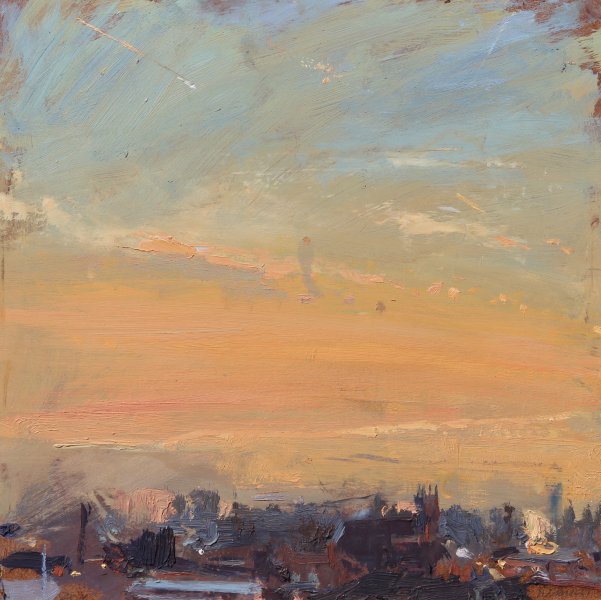
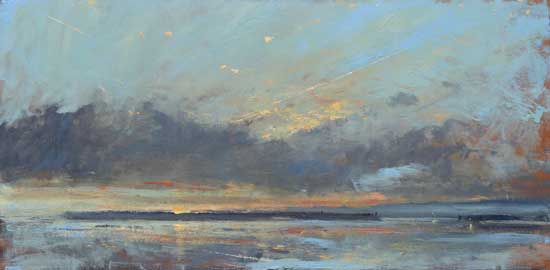
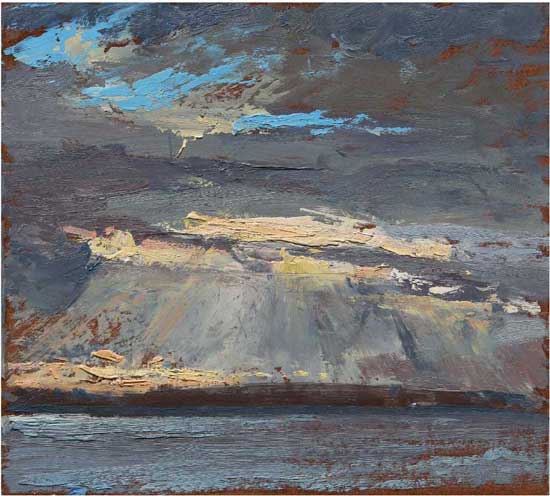
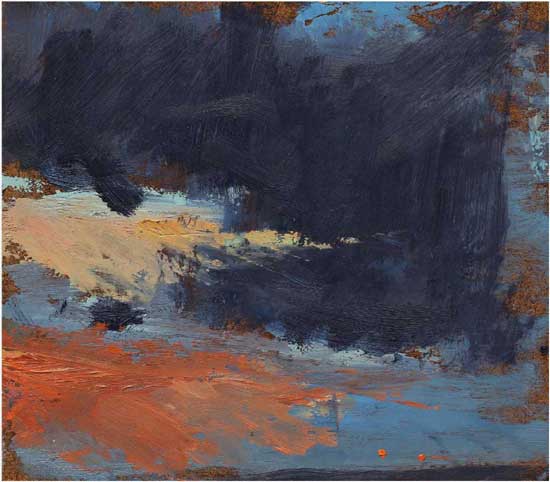
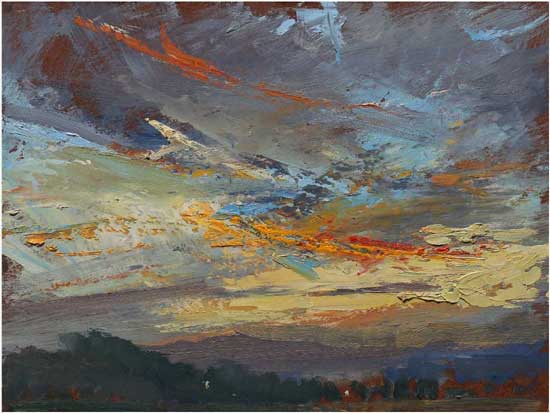
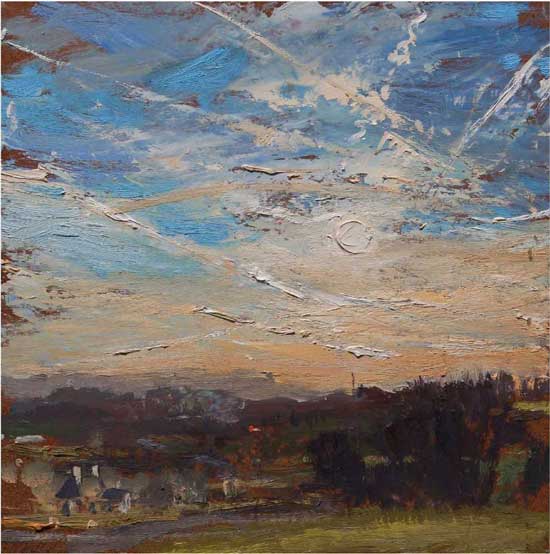
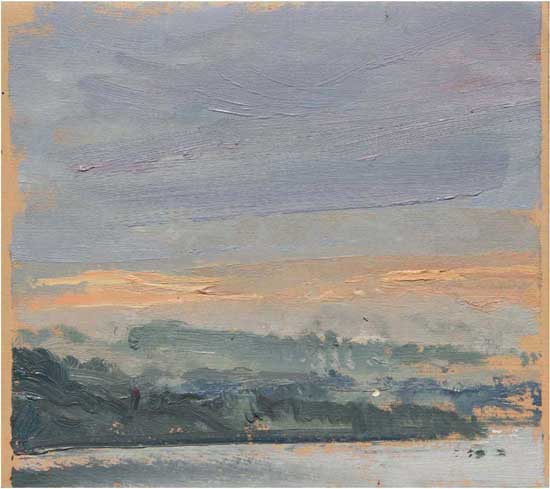
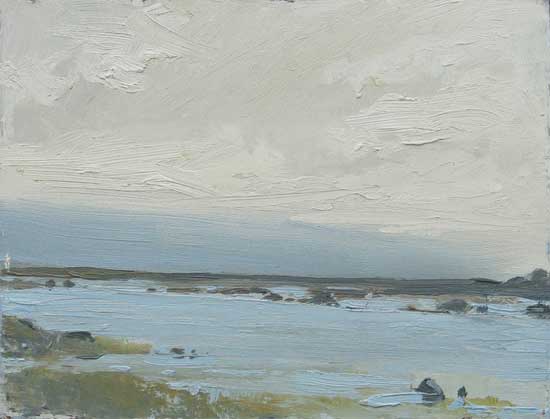
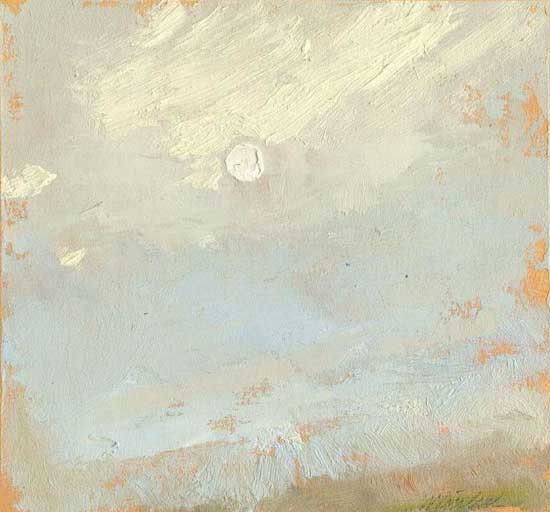
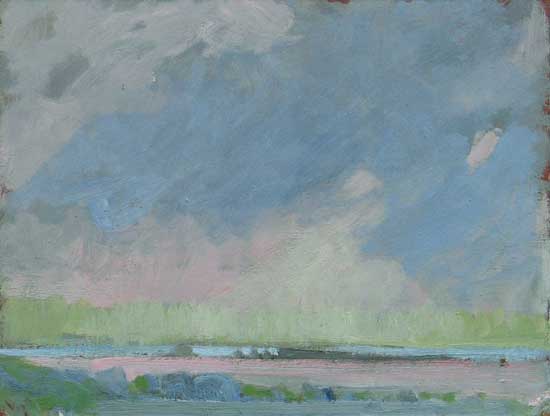
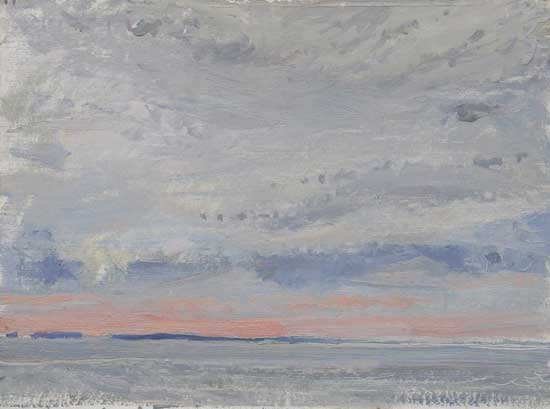
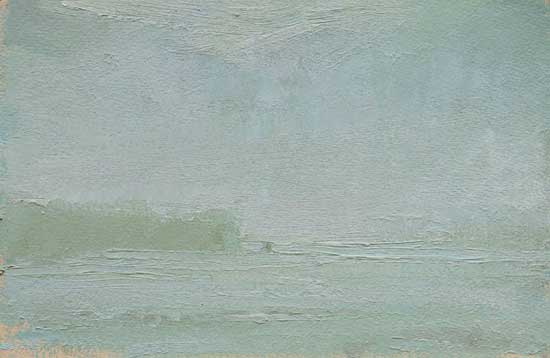

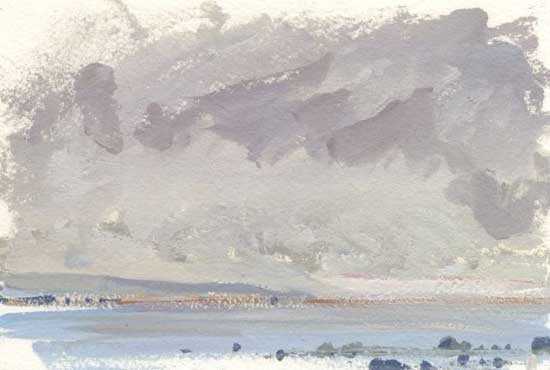
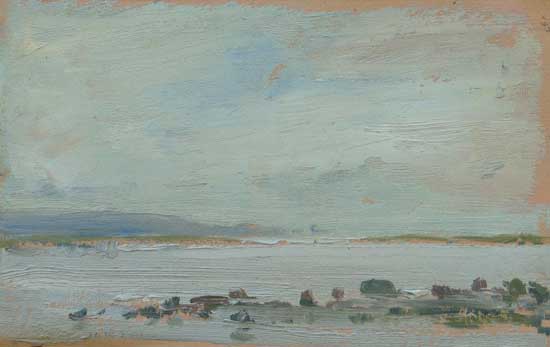
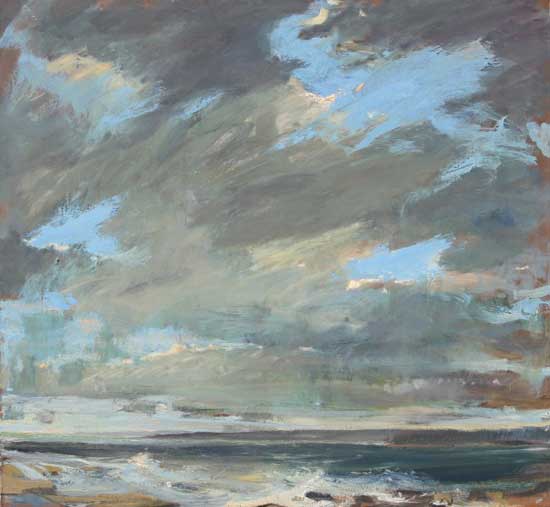
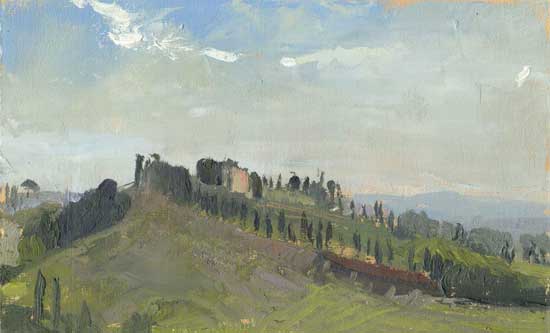


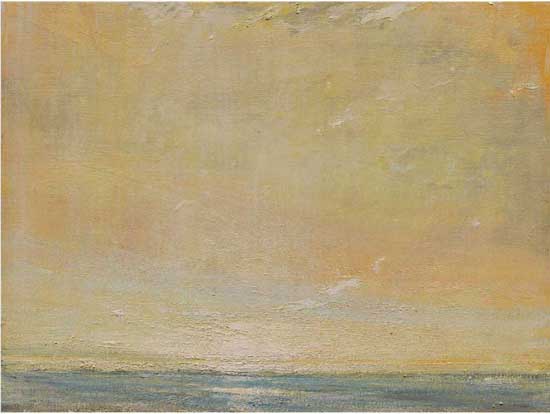
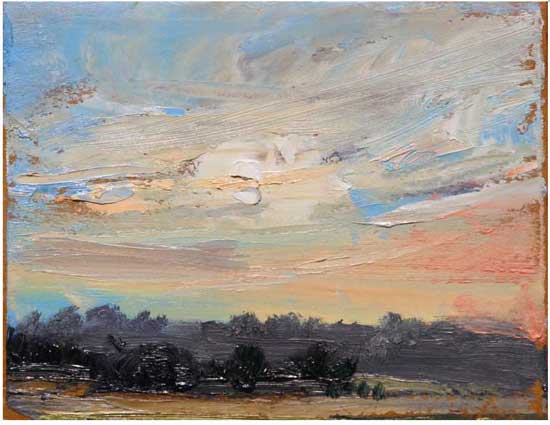
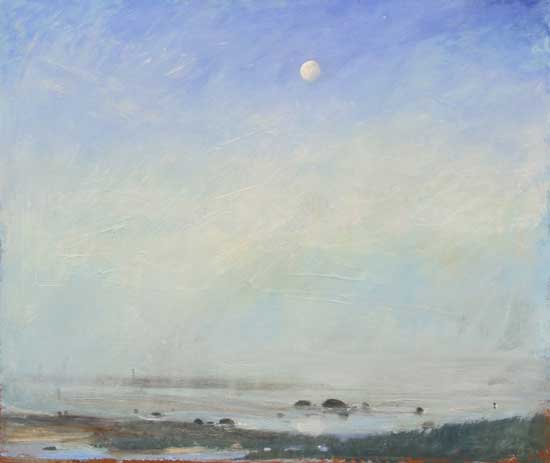
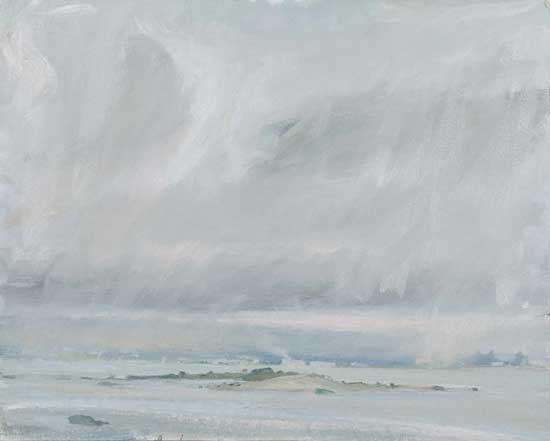
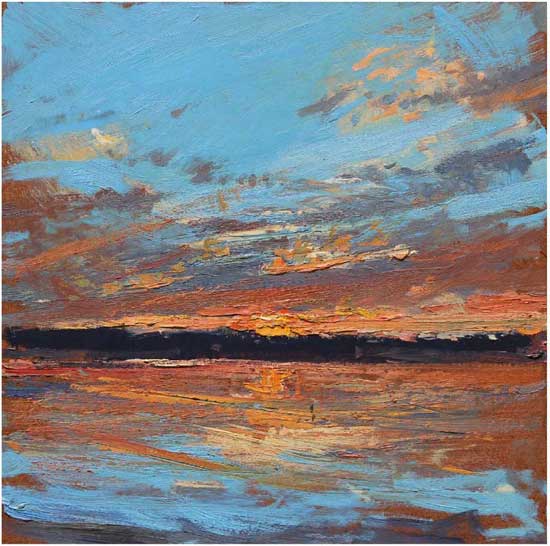




Wonderful work! Thanks for sharing!
Really enjoyed the interview. Wonderful work as always JD!
your view on landscape painting outside is perfectly clear! Tell you something in some paintings of yours, I can recognize Ruysdael. Your work comes from the bottom of your soul. I wonder if you go back to Cranberry Island or to Tuscany. Nobody knows Only time and circumstances tell.
Thanks for sharing all this beauty! It is a great warm interview.
Thanks for sharing al these beauty..
Masterful works and masterly comments.
I have found this illustrated interview page to be so very inspiring.
I’d say “may your work be blessed”, but it obviously is already.
Great.
Thank you for this gr
Thank you for another great interview. I love his attachment to the island and how it inspires his work. Very expressive brushwork. Love it!
What a magnificent interview ! I love the paintings and I feel like staring at them endlessly in contemplation. Thank you for your inspiration.
I’ve been following new interviews and reading through old ones here for so long now, and I’m so thrilled to see a Lancaster, PA artist here (and a very familiar yet beautifully original Lancaster cityscape)! I could look at these paintings for hours and hours. I love how you paint air and space. I appreciate your reverence for the lineage of painting too. Thank you for this informative and inspirational interview. This is one I will bookmark and keep coming back to, and it has given me some great painters to look at more closely. I love the idea of the Friday Friends group. Thank you!
Beautiful work! I really admire the emphasis of paint as paint, while also transposing felt and seen light and space.
Great interview ! The commentary as well as the images shed further insight into process, and that’s what painting is all about in my opinion.
I am madly in love with your work JD! Great interview, very thoughtful–but I am absolutely knocked over by your use of color, movement, texture and rendering in your masterful compositions. Congratulations on all that you have accomnplished!!
Thank you all for your kind words!
I am so glad I was able to view this interview, JD. It was great to learn so much about your life in art. Your words are wonderful, but your works are exquisite. I’m inspired and lifted and so thankful that these paintings are reproduced so beautifully here. The Italian pieces are truly wonderful, and the pieces done in Maine are incredible. To capture the light and color of either of these places is pretty remarkable. Thanks so much for sharing this, and for giving me the second chance to view and read.
“Be guided by feeling alone. We are only simple mortals, subject to error; so listen to the advice of others, but follow only what you understand and can unite in your own feeling.” (Camille Corot)
I think you have grasped this completely……
peace,
C.
I love your painting’s surface and how you eloquently depicted the ‘light’. I look forward to seeing your future work when you return to Cranberry.
Your paintings are gorgeous. I would love to get back in touch. I am painting the Newfoundland landscape. I would like to send you some pics. Can you send me an email address?
Best wishes for continued success!
Jane
My…how can it be? Where has time been? Far to long , my old friend, far to long! I will send my email to your Mother, I don’t think this is a private site! It will be good to see you through your painting. Newfoundland….must be beautiful!. Thank you for reaching out Dear Jane!
JD